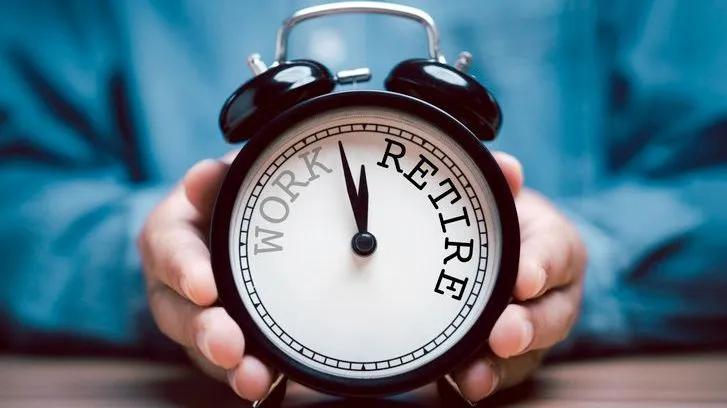In the Empire State, the retirement age can vary depending on several factors, including the type of employment and the retirement system one is part of. For most individuals, the standard retirement age aligns with the federal guidelines set by the Social Security Administration, which is gradually increasing to 67 for those born in 1960 or later. However, for public employees, such as teachers and government workers, the New York State and Local Retirement System (NYSLRS) and the New York City Employees’ Retirement System (NYCERS) offer different retirement age options based on tier membership and years of service.
A financial advisor can help you time your retirement to maximize pension and Social Security benefits.
Understanding the New York State Retirement System
The New York State and Local Retirement System (NYSLRS) provides pension benefits to public employees, including state and local government workers, police officers and firefighters. As of 2025, there were more than 1.2 million participants, including nearly 714,000 members and more than 522,000 retirees and beneficiaries, making it one of the largest public pension systems in the United States.
The NYSLRS is divided into two plans: the Employees’ Retirement System (ERS) and the Police and Fire Retirement System (PFRS). ERS covers most public employees, including state and local government workers, while PFRS is specifically for police officers and firefighters.
The key differences between the two are in the eligibility requirements and benefit structures. PFRS members often have the option to retire earlier than ERS members due to the physically demanding nature of their jobs, and their benefit formulas typically reflect higher pensions in recognition of these risks.
Retirement Age By Tiers for ERS Members

NYSLRS has six membership tiers for ERS, each with its own set of rules regarding retirement age and benefits. The tier that a member falls into is determined by their date of hire. The oldest tier, Tier 1, applies to employees covered by ERS who joined NYSLRS before July 1, 1973, while the newest, Tier 6, applies to those who joined on or after April 1, 2012.
Tier 1 and Tier 2 Members
Members in ERS Tier 1, who were hired before July 1, 1973, can generally retire at age 55 with full benefits. This early retirement age is one of the key benefits for members in this tier.
Tier 2 members, who were hired between July 1, 1973, and July 27, 1976, also have a minimum retirement age of 55, but their benefits may be subject to reductions if they retire before age 62, depending on their years of service.
Tier 3 and Tier 4 Members
Tier 3 and Tier 4 members have slightly different rules, although their benefits are often similar. Tier 3 includes members who joined NYSLRS as state correction officers on or after July 27, 1976, but before January 1, 2010, or on or after July 27, 1976, but before September 1, 1983 for all other members. Meanwhile, Tier 4 includes those who joined between September 1, 1983, and December 31, 2009.
In both tiers, members can retire at age 62 with full benefits, though they may retire as early as age 55 with reduced benefits if they have completed at least five years of service.
Tier 5 Members
Members of Tier 5, which includes employees who joined NYSLRS between January 1, 2010, and March 31, 2012, can retire at age 62 with full benefits. However, those who opt to retire earlier, as young as age 55, generally will face a permanent reduction in benefits if they have less than 30 years of credited service. By comparison, Tier 3 and 4 members do not face this reduction with at least 30 years of service.
Tier 6 Members
Tier 6 applies to members who joined on or after April 1, 2012, and it reflects more recent changes aimed at ensuring the long-term sustainability of the pension system. Tier 6 members must wait until age 63 to retire with full benefits. Similar to other tiers, members may choose to retire as early as age 55, but their benefits will be reduced if they retire before age 63.
This tier is considered less generous than the previous tiers, particularly in terms of early retirement penalties.
When Can Police and Firefighters Retire in New York?
In New York, the PFRS offers a more flexible and earlier retirement timeline compared to other state employees, reflecting the physically demanding nature of police and firefighter roles. Each tier has its own set of contribution and benefit formulas, making it important for members to understand their specific plan.
Tier 1 members are eligible to retire at age 55. For members of Tiers 2, 3, 5 and 6 (note Tier 4 is not applicable for PFRS), the minimum retirement age for full benefits is 62 if they have completed at least five years of service. These members can retire earlier with a reduced pension if they have at least five years of service.
Across all tiers, members in special plans can retire after they have completed their plan’s minimum service requirement, regardless of their age at that time.
Additional Considerations for Public Employees

In addition to age, another key consideration for NYSLRS members is the vesting period, which determines when they become eligible for retirement benefits. For most members, vesting occurs after five years of credited service. Once a member is vested, they can retire and collect benefits, though the amount of their benefits will depend on their years of service and their final average salary.
Public employees in New York should be aware that their retirement age and benefits are also influenced by any collective bargaining agreements in place at the time of their retirement. These agreements may include additional retirement benefits or options, such as early retirement incentives or special provisions for health insurance coverage.
Tips for Saving for Retirement Even If You Have a Pension
Planning for retirement is a crucial step in ensuring financial security in your later years, even if you have a pension. While pensions provide a steady income stream, they may not cover all your expenses or adapt to inflation over time. Here are some tips to help you save for retirement effectively, complementing your pension benefits.
- Diversify your investments: Relying solely on a pension can be risky if economic conditions change. Diversifying your investments across stocks, bonds, and mutual funds can provide additional income streams and help mitigate risks. This strategy can also offer growth potential that outpaces inflation.
- Maximize contributions to retirement accounts: Take full advantage of retirement accounts like 401(k)s or IRAs. These accounts often offer tax advantages, such as tax-deferred growth or tax-free withdrawals, depending on the type. Contributing the maximum allowed can significantly boost your retirement savings over time.
- Create a budget and stick to it: Establishing a budget helps you manage your current expenses and identify areas where you can save more. By tracking your spending, you can allocate more funds toward retirement savings, ensuring you have enough to cover future needs.
- Consider delaying Social Security benefits: If possible, delay claiming Social Security benefits until you reach full retirement age or later. Delaying benefits can increase your monthly payout, providing a larger financial cushion during retirement. This strategy can be particularly beneficial if you expect to live longer.
By implementing these strategies, you can enhance your retirement savings and enjoy a more secure financial future. Even with a pension, taking additional steps to save for retirement can provide peace of mind and greater financial flexibility in your golden years.
Bottom Line
Understanding the retirement age in New York is crucial for anyone planning their financial future in the Empire State. While the standard retirement age for full Social Security benefits is 67 for those born in 1960 or later, many New Yorkers choose to retire earlier or later based on personal circumstances and financial readiness. It’s important to note that retiring before the age of 67 can result in reduced Social Security benefits, while delaying retirement can increase them. Planning for retirement in New York also involves considering the cost of living, healthcare needs and lifestyle preferences.
Retirement Planning Tips
- A financial advisor can help you plan and save for retirement. Finding a financial advisor doesn’t have to be hard. SmartAsset’s free tool matches you with vetted financial advisors who serve your area, and you can have a free introductory call with your advisor matches to decide which one you feel is right for you. If you’re ready to find an advisor who can help you achieve your financial goals, get started now.
- Strategically converting portions of your traditional IRA to a Roth IRA during low-income years or before required minimum distributions (RMDs) start can help reduce your tax burden later in retirement and allow for tax-free withdrawals in the future.
Photo credit: ©iStock.com/OlegAlbinsky, ©iStock.com/LaylaBird, ©iStock.com/Dilok Klaisataporn
